Pelican Spiders: The Spider Assassin Specialist
Spiders of the family Archaeidae are also known as pelican spiders or assassin spiders. They really don’t look like any typical spider, and should be really high on any spider enthusiast’s must-see list.
The Pelican
Pelican spiders have a grotesquely elongated and tubular carapace that is slightly swollen at the apex, giving the appearance of a giraffe-like neck and head. From the “head”, it wraps around the chelicerae which are typically longer than its “neck”. This bizarre shape closely resembles a pelican, which of course resulted in the common name pelican spiders. These spiders are as small as a grain of rice, with the largest that I found having a body length of less than 1cm.
The Assassin
To top it off, Archaeids are arachnophagous – which means that they prey exclusively on spiders – hence the common name assassin spiders. They do not build webs, but make use of their modified carapace and chelicerae to hunt and grapple spiders from a distance, akin to wielding a long spear.
Archaeidae C. L. Koch & Berendt, 1854
Originally described from 40 million-year-old amber fossils in Europe in the 1840s, the first living spiders were only found in 1881. For over a century, live spiders from this family were known to be endemic to Madagascar until more were discovered and described from South Africa and parts of Australia in the 1980s. The only two recorded genera of archaeids in Madagascar are Eriauchenus (2 to 4 apical spines) and Madagascarchaea (6 apical spines).
Eriauchenus O. Pickard-Cambridge, 1881
Within Eriauchenus are two groups. The “workmani group” is recognised by the triangular abdomen with a posterior tubercle on its dorsum, while those in the “bourgini group” have a round abdomen. With that, it looked like all the archaeids that I’d encountered belonged to the “workmani group”.Acknowledgements
Special thanks to Serge Pasquasy for pointing me to the areas with sightings of these spiders, and Patrick Andriamihaja for arranging the trip! Many thanks also to our macro-crazy group who extended their trip from BugShot Mozambique to join me in this expedition, as well as Mok and Cham who flew in all the way from Singapore to join us!

You may engage Patrick as your fixer for any nature-centric trip to Madagascar. The local guides desperately need their income even more than before with the sharp drop in tourism due to COVID-19.
Note that the genus Eriauchenus was previously incorrectly spelt as Eriauchenius.
Assassin spider / Pelican spider (Eriauchenus sp.)
The very first pelican spider that I found had a very distinct tubercle at the posterior end of its abdomen.
Assassin spider / Pelican spider (Eriauchenus sp.)
It had 4 obvious apical spines on its “head”. Those elongated chelicerae are just out of this world!
Assassin spider / Pelican spider (Eriauchenus sp.)
From this angle, we can see an obvious gap at the base of the chelicerae. The gap allows it to raise each chelicera up to about 90 degrees to stab other spiders from a safe distance.
Assassin spider / Pelican spider (Eriauchenus sp.)
Just for fun, I tried to light the spider up from behind. Nothing special unfortunately.
Assassin spider / Pelican spider (Eriauchenus sp.)
The next specimen that I found was a mature male! It was much bigger than the first one, and its first pair of legs were exceptionally long, presumably for dragging its prey in.
Assassin spider / Pelican spider (Eriauchenus sp.)
It was very active, so I took shots of every angle possible to aid in future identification.
Assassin spider / Pelican spider (Eriauchenus sp.)
Hanging by a thread.
Assassin spider / Pelican spider (Eriauchenus sp.)
Decided to keep and recycle some of its silk.
Assassin spider / Pelican spider (Eriauchenus sp.)
Showing off its long legs. The first pair of legs are rarely on the ground and more for grappling prey.
Assassin spider / Pelican spider (Eriauchenus sp.)
Another view of the 4 apical spines.
Assassin spider / Pelican spider (Eriauchenus sp.)
Close up. Can you see all of its eyes?
Assassin spider / Pelican spider (Eriauchenus sp.)
Took a while, but it finally stood still for a bit for me to go closer. That’s the face of an assassin.
Assassin spider / Pelican spider (Eriauchenus sp.)
The last pelican spider that I found on the final day of my trip appeared to be a gravid female, or a well-fed one.
Assassin spider / Pelican spider (Eriauchenus sp.)
Can’t get enough of its face!
Assassin spider / Pelican spider (Eriauchenus sp.)
On closer inspection, there is a front-facing spine near the base of each chelicera. If you were to imagine the chelicera being raised up by 90 degrees, the spine would have formed a shape that allowed the chelicera to fit snugly with the head.
Assassin spider / Pelican spider (Eriauchenus sp.)
Bye bye! The pelican spider was definitely my top target for this trip. Now that I’ve seen one, I’ve to find all the other species around…
Galactic Staircase
I had to climb this flight of stairs after every field trip to reach my room. On one night, I decided to just chill at the bottom and take some pictures.
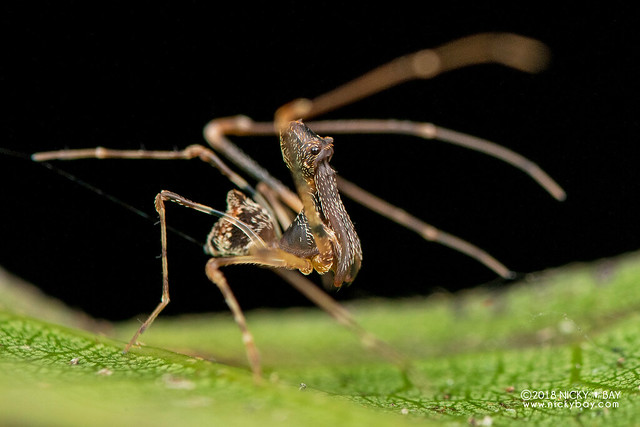
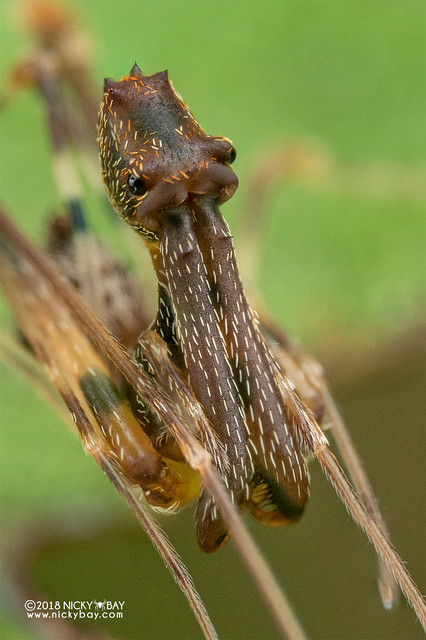
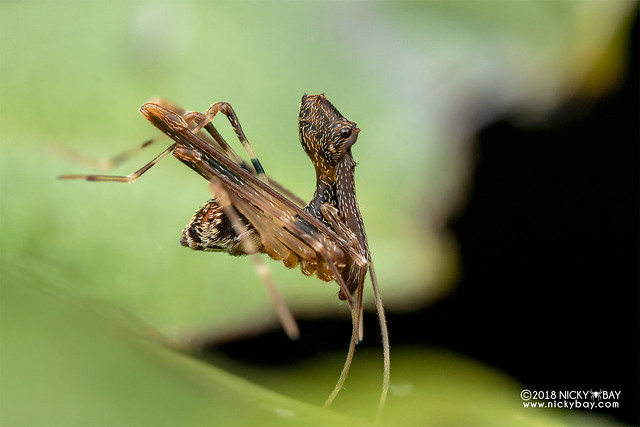
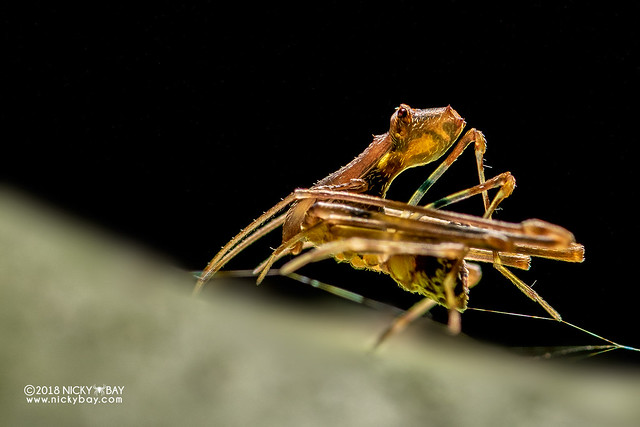

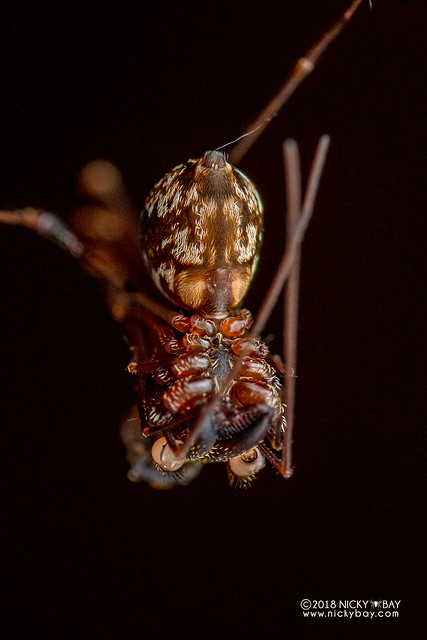
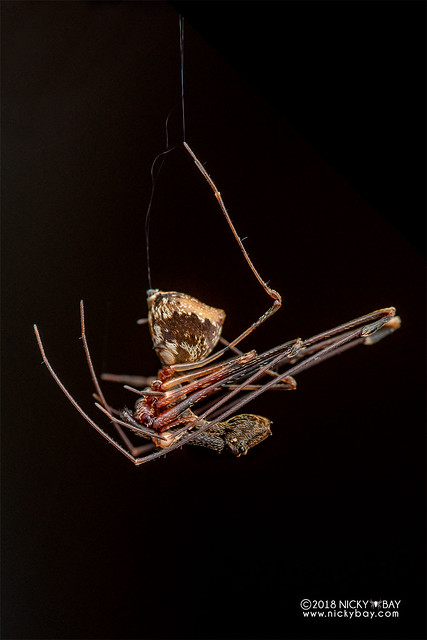

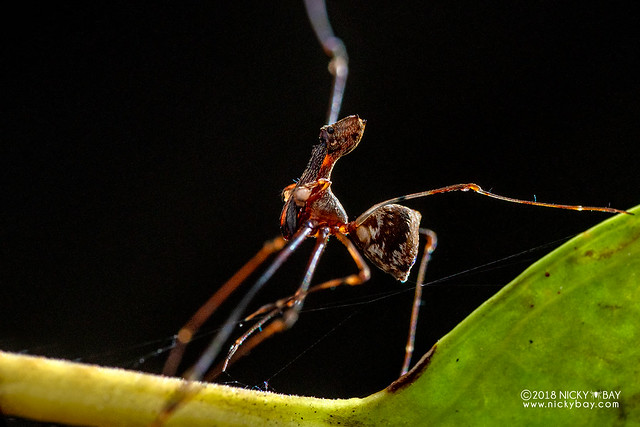
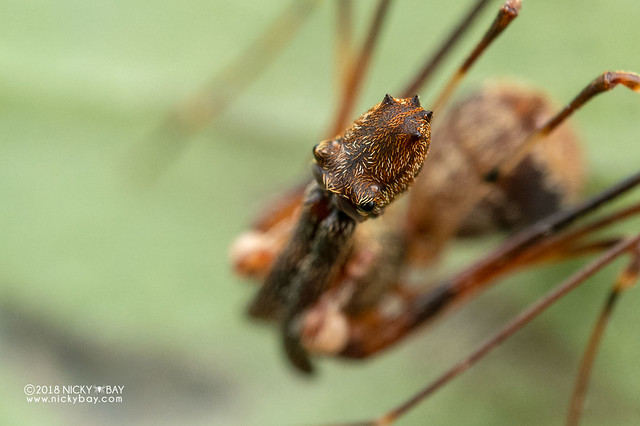

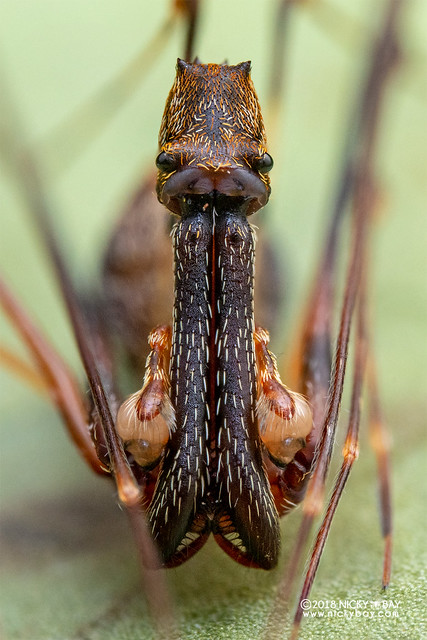
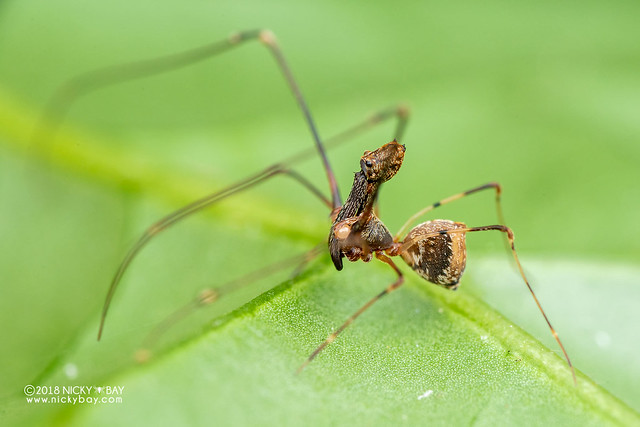
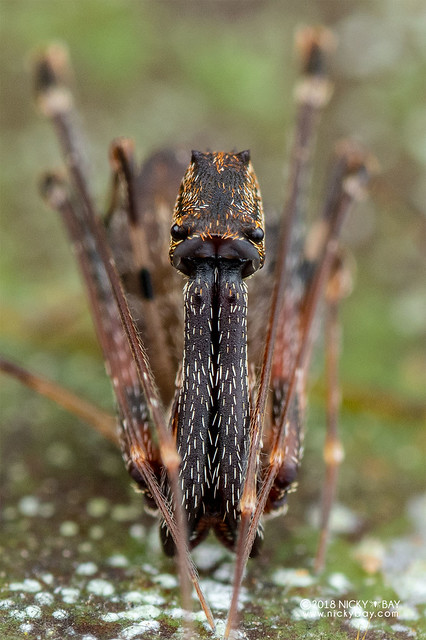
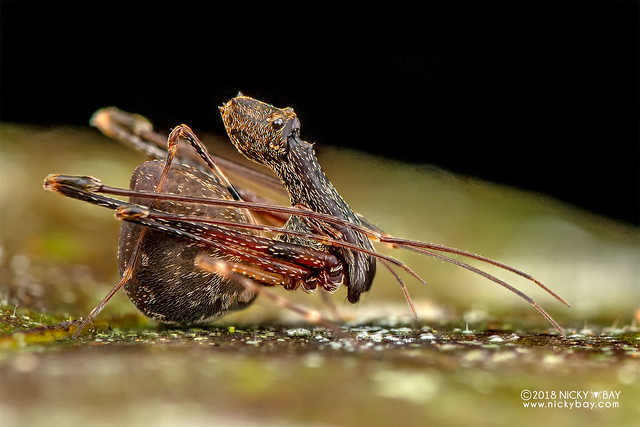
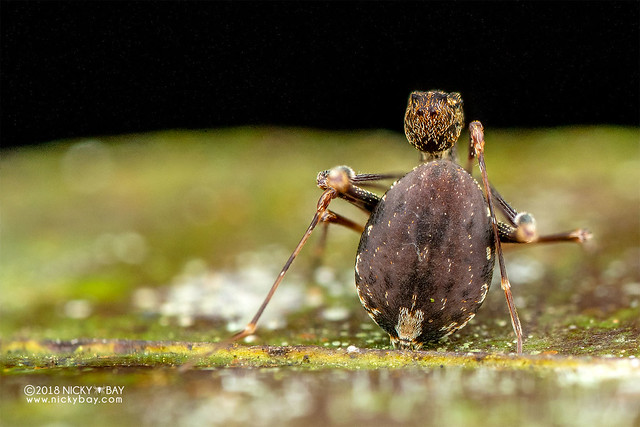

My complete Archaeidae album can be viewed here on Flickr.
If you liked this series, do check out my Spiders of Madagascar checklist where I documented 23 families of spiders from my short trip to Madagascar.
With the help of Patrick, I have also put together a little checklist of the Chameleons of Madagascar.

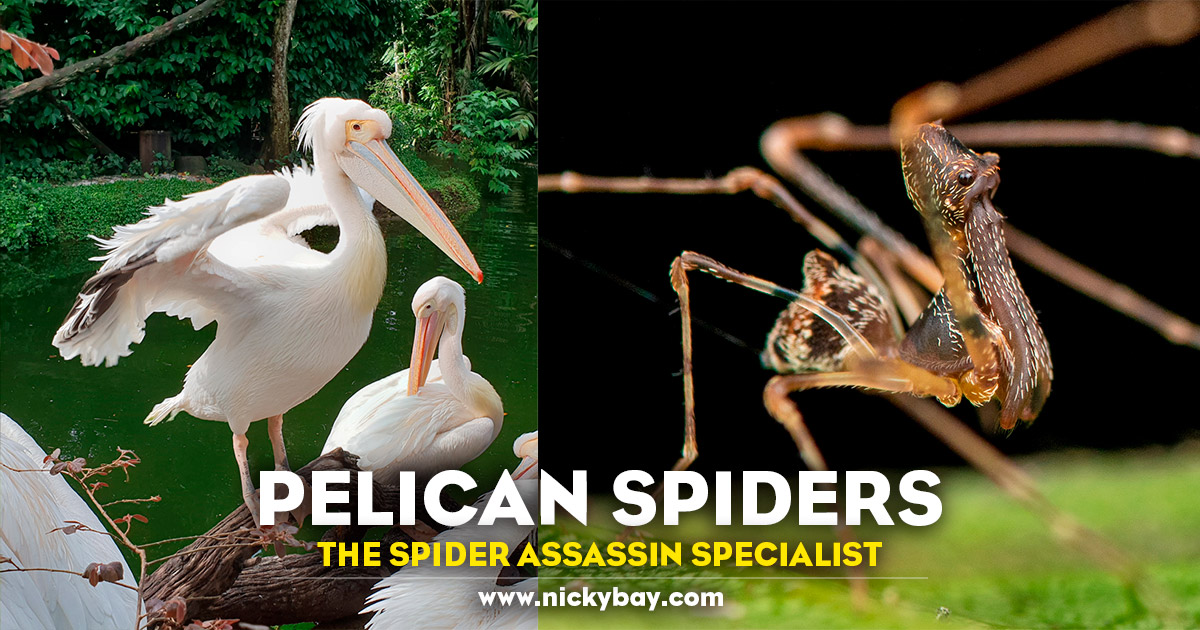
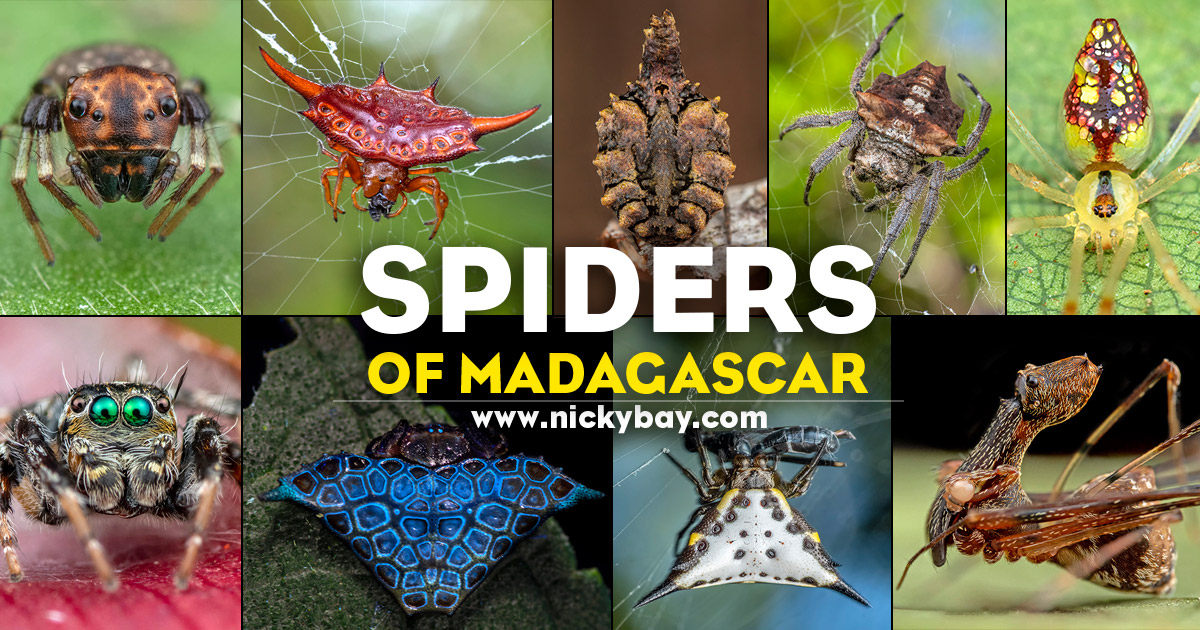
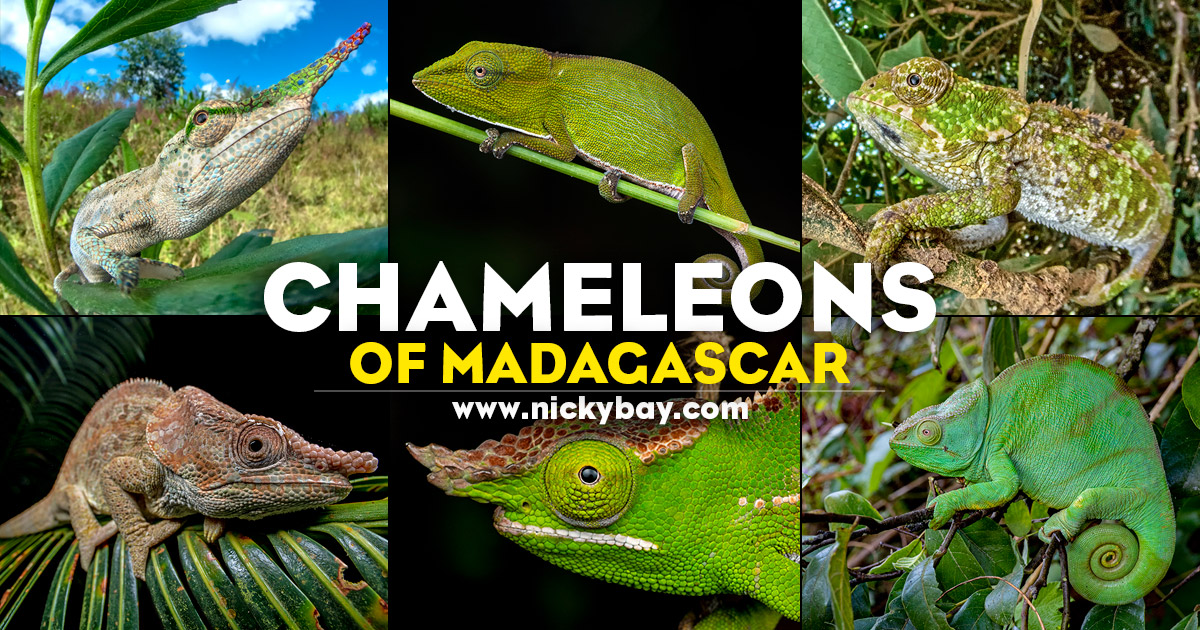


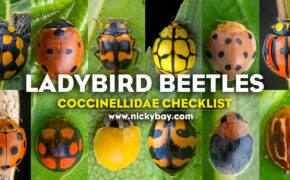
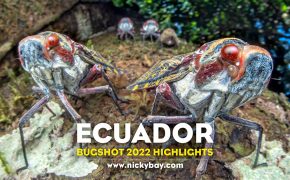
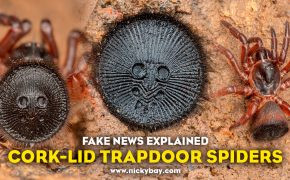
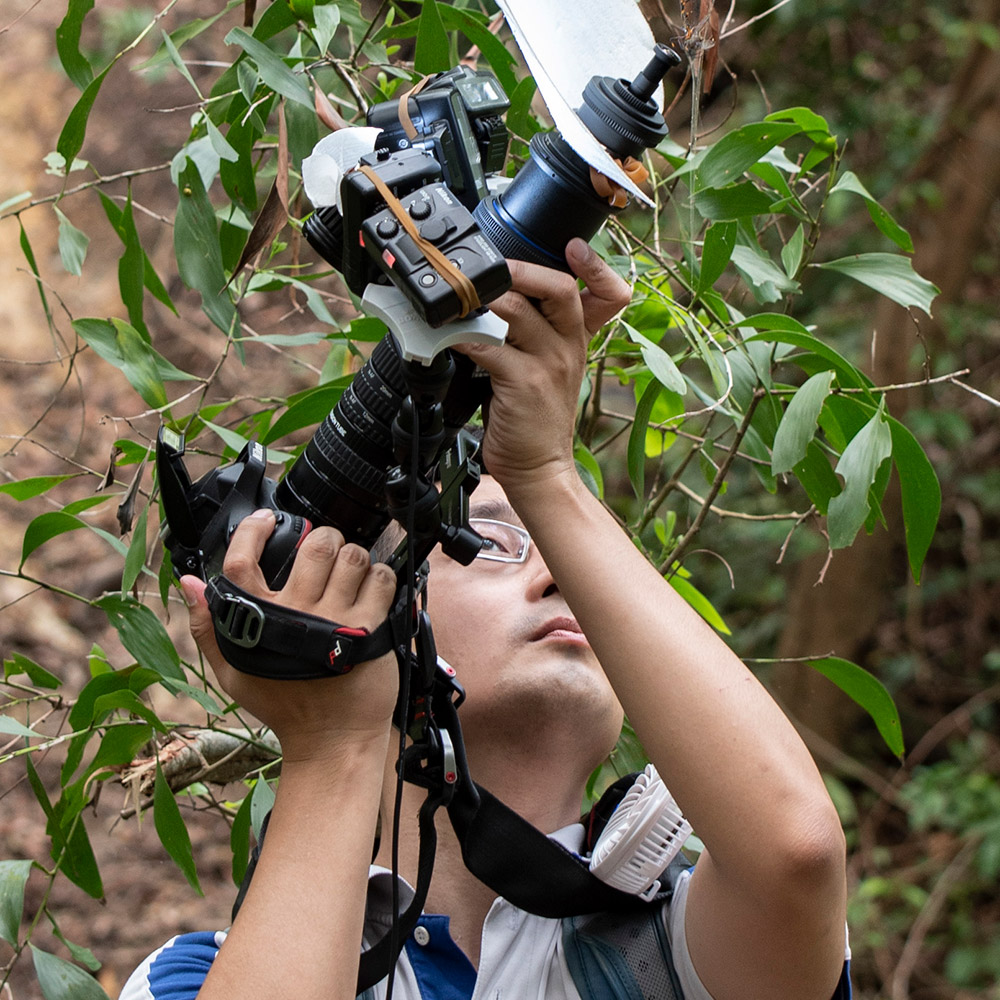










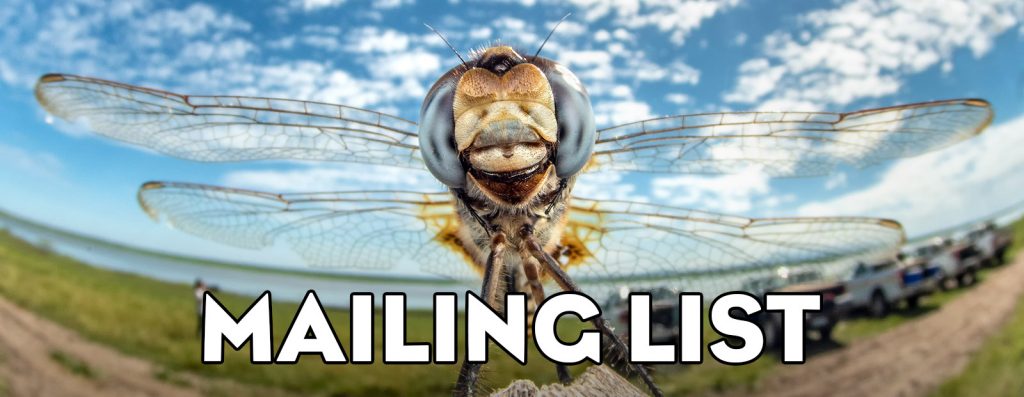
Henry Robison
Nicky:
I loved your post on these pelican spiders! I was amazed at their morphology as I had never seen, nor heard of “pelican spiders” and I am a zoologist! Great photography. I love seeing your photos and your posts on your website. Your photos are incredible and beautiful. Thanks for posting them
Henry W. Robison, Ph.D.
John Sibley
Hi Nicky,
Thanks for your superb macro shots of the pelican spiders.
You really must come to New Zealand to see the Giant wetas (and other strange wetas!), the giant carnivorous earwigs (!) and the marine insects (caddisflies) – some of the ONLY marine insects on the planet!
Cheers
John